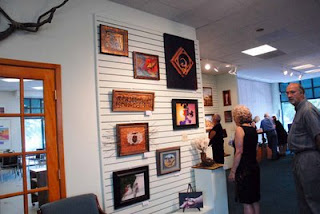At the November Membership Association meeting for
RRAA, the program that followed the business meeting portion was a critique of your artwork done by
Bud Edmondson. Each member was asked to bring in a piece of their work for critiquing. Each painting or artwork was given a good 2 minutes in review.
Even though I did not bring anything in, I learned a lot about how I approached my art compositions and why some were more successful than others.
When Bud critiques, he looks for five things. He doesn't have to have any
partiality towards a particular style of art in order to critique successfully. Here's my notes (I hope they're not too
cryptic) from that night:
Five things
assessed in each piece of work: 1) drawing 2) composition and design 3) values 4) color 5) edges
In respect to edges, sometimes they are too hard and sometimes they are too soft in the subject matter.
The center of interest in the
composition should have the strongest value and contrast.
Do not put the horizon line and focal point of the
composition dead center in the picture plane.
Atmospheric perspective is achieved by changes in value and have subordinate values and color.
Never (repeat never) use green right out of the tube for trees.
Avoid making the foreground subject matter overpowering. You need to provide a way within the image for the viewer to look past the foreground.
Remember that values can change and shift from side to side in the picture plane (and should in most cases).
Avoid having the same
values throughout the painting.
Values can be used to bring focus to the subject matter. The sky is always the
lightest value.
A color can appear to be darker than what it is by making the subject next to it a lighter value.
Your
darkest darks should be in the foreground.
A composition can get problematic and 'stiff' if the subject matter has equal space around it. Decide to make the subject higher or lower in the picture plane.
Shadows are a darker value of whatever it is cast upon. For example, a shadow cast on concrete should be of a darker value of that concrete.
I already have a few books on color theory. In light of this art critique session, I decided to seek out something more relevant. "Color in Contemprary Painting-Integrating Practice and Theory" by Charles LeClair is perhaps the most relevant book I've seen in regards to this topic. I highly recommend it. Since I work in multiple mediums, I also sought out a book specific to photography and composition. "The Photographer's Eye" by Michael Freeman is spot-on and I highly recommend it. More detailed descriptions of these books can be found at Amazon.com











































